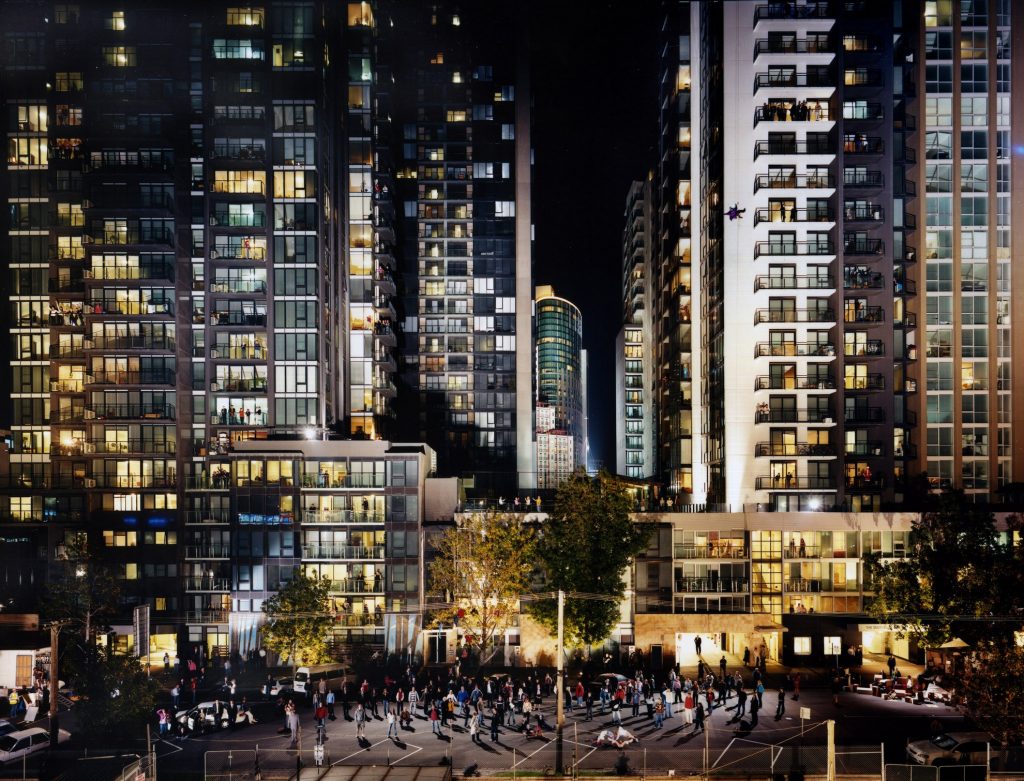Summary
This large C-type photograph is one in an ongoing series entitled ‘Crowd Theory’ by Melbourne-based artist Simon Terrill. Interested in the figure of the crowd – what he calls ‘an open, fleeting and promiscuous state of together-ness … always unstable, either growing or dissipating’ – Terrill creates group portraits in public places, which are also portraits of place. Arguably, the works also investigate the texture and limits of the idea of ‘community’ in their expression of people’s relationships with each other and the places they inhabit.
The working process for the series is interesting and points to the fact that each artwork is both a performance event and a documentation. Having researched a location, Terrill invites anyone who has an association with the place to come together for a collective portrait. He orchestrates the event only in terms of its organisation (the timing, lighting, music, catering etc.), with those who gather left to their own devices as to how they occupy the space. The result is compelling yet unsettling. The consummate formal representation of a familiar urban landscape is knocked off kilter by the strangely democratised (flattened?) and artificial appearance of the crowd coupled with the bright lighting. These group portraits provoke a productive clanging of staged/unstaged, natural/artificial, group/individual and engaged/disengaged, defamiliarising and making hyperreal what at first glance appears straightforward and naturalistic.
In ‘Crowd Theory (Southbank)’, soaring, well-lit high-rises mark central Melbourne as a 21st-century citadel of human occupation; it’s the 24-hour city envisaged in Postcode 3000, the late 20th-century strategy for the inner-city’s development. The human subjects in Terrill’s group portrait exist as a crowd of individuals influenced and organised by the location they inhabit. The lofty heights, the glass walls and plentiful balconies together determine indirect, observational relationships with the public space and those who use it; yet the portrait also seems to suggest more random, immersed interactions structuring relationships at street level.
